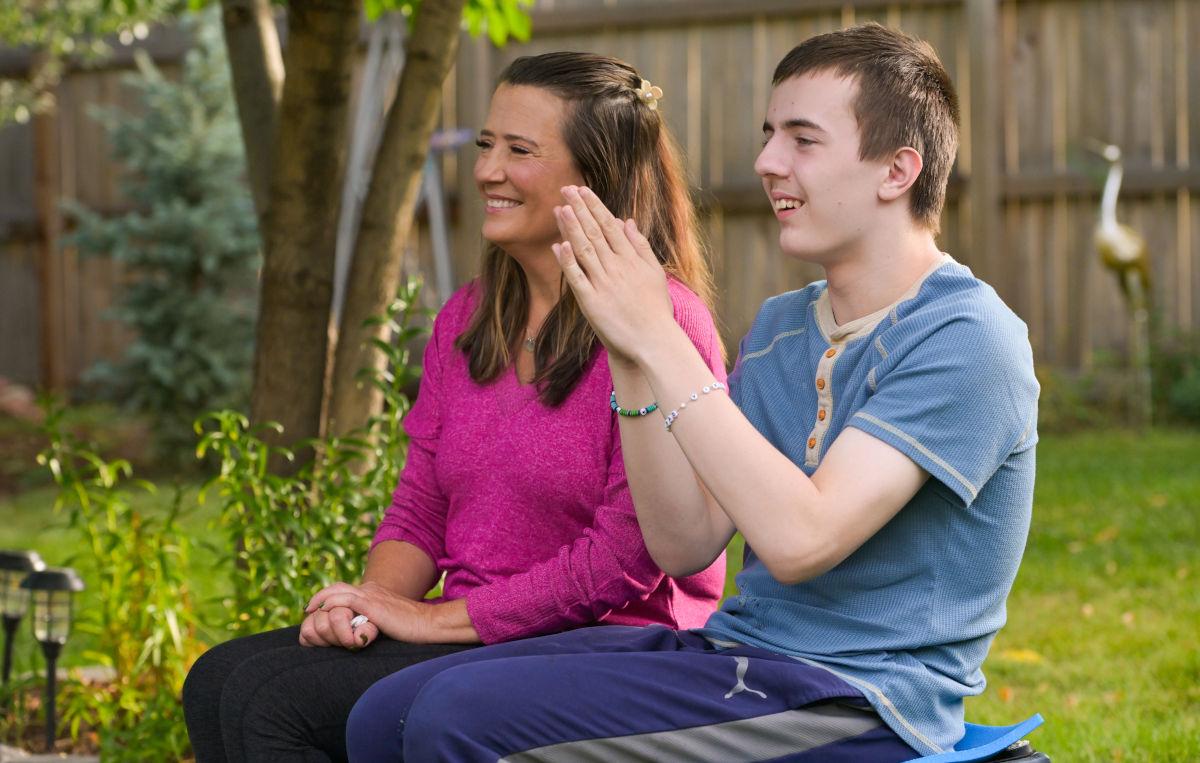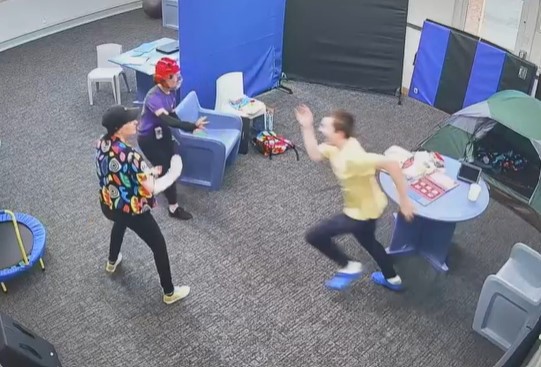
When he was about 14-years-old, Sean Daley’s personality changed dramatically. He became aggressive, violent and withdrawn.
Sean, who has autism spectrum disorder, had always had trouble with social interactions but this was different, said his mother, Jo Daley of Denver.
“Just approaching him could trigger aggression, saying hello to him could trigger aggression,” Daley said.
It became a challenge to get him to get dressed in the morning, eat meals, or clean his room.
“You were worried that he would try to reach out, grab you, punch you, kick you, basically attack you,” Daley recounted. “He was constantly kicking the walls and making big Frisbee-sized holes in our walls and in the ceilings, breaking things.”
The shift put the family on a multi-year journey to find out what had happened to Sean and how to treat him. It led them to a diagnosis of catatonia, a condition characterized by abnormal movements and behavior as well as withdrawal. The textbook case of catatonia is a patient who doesn’t move for hours at a time or adopts a strange posture for long periods. But the condition can also be marked by irritability and outward aggression.
Experts believe as many as 5 to 10 percent of those on the high end of the autism spectrum also have catatonia, but because the symptoms can mimic autism, it often goes undiagnosed.
Sean was diagnosed with autism spectrum disorder when he was three years old. He was fairly low-functioning, according to Daley. He underwent behavioral, speech and occupational therapy; and his parents experimented with different diets and medications. All of this was fairly typical within the autism community.
However, when Sean’s new behaviors emerged, his parents reached out to professionals, but there weren’t a lot of answers. He tried new medications. One doctor told them it was hormonal.
“We were almost at our wits end,” Daley said. “We were…just walking on eggshells, not being able to understand. Was it schizophrenia? Was it bipolar?”
Sean spent a month at Children’s Hospital Colorado’s in-patient psychiatric unit where doctors started him on lithium and later placed in a behavioral treatment program. Then, one day,Sean attacked his driver and the transportation service was discontinued. In search of alternative options, Sean’s parents sought help from the Denver Public Schools, which had evaluators come observe Sean. One of the psychologists suggested he might have catatonia.
Daley said she immediately Googled the term.
“And I just screamed out to my husband and said, ‘Oh my gosh, come look at this. He's got every symptom. This has to be it,’” she said.
Catatonia in the general population is hard to quantify, but neurologic conditions like schizophrenia, major depression and bi-polar depression can cause catatonia. It’s estimated that between 5 to 25 percent of in-patients in psychiatric units have the condition.
The couple presented what they’d learned to doctors at Children’s. After looking over the evaluations, they concurred with the diagnosis.

One of the treatments for catatonia was ECT or Electroconvulsive Therapy. The treatment is often used for severe depressive disorder or other psychiatric problems, but it’s also approved for catatonia. The medical procedure that’s been around since the 1930’s but the treatment today is vastly different from those early days. Doctors use a small electrical current to induce a brief seizure. A patient is put under general anesthesia for a short period of time. Patients can experience headaches and nausea, and in some cases, memory loss and cognitive changes —, but those are typically short-lived.
Daley and her husband proposed the idea to Sean’s doctors and got the go-ahead.
The challenge was finding a psychiatrist willing to administer ECT to Sean. Daley said they were turned away from several clinics who didn’t want to take on the risk of treating Sean. Some ECT doctors won’t take on aggressive patients because nurses and doctors aren’t trained to deal with potential violence, and patients like Sean are known to lash out during simple procedures like inserting an IV.
But Dr. Christopher James, a psychiatrist at UCHealth, was convinced that with proper care, he and his staff could perform the procedure safely on Sean.
James said for people with treatment resistant depression and catatonia, ECT is highly effective.
“I tell patients it's far and away the most effective treatment we have for both depression and catatonia in psychiatry,” said Dr. James. “There are a lot of studies out there that show response and remission rates in the 70-80 percent range and some even higher.”
“The numbers are quite remarkable when you take into account that most of the people in these studies are treatment resistant to begin with,” he said.
Sean, at 18-years-old, underwent three ECT sessions a week for several weeks beginning in the spring of 2024, before eventually tapering down to once a week. By the third treatment, his family noticed a remarkable change.
“Sean seemed so calm, there was eye contact that had returned, some language, some greetings,” Daley said. “He came over and said hello to us. He was smiling for the first time. We hadn't seen a smile in many years, and it was just shocking.”
“We were so surprised and amazed,” she said.
Daley said they were cautiously hopeful at the beginning. But with each treatment Sean has remained happy and “back to his old self.” She said the aggressive behavior just stopped.
“We just celebrate every day in our family that we can be happy and safe,” Daley said.
Since Sean can’t verbalize how he feels, Daley said she’s not sure if he experienced any side-effects, but she didn’t witness any.
James said it’s not unusual for patients to suffer for years, trying multiple medications with little effect before they find ECT and experience immense relief from the treatment.
He said the challenge is getting the word out to people who would benefit but might be reluctant because they don’t know about the treatment or because of the stigma some people have about ECT.
James said while ECT is approved by the FDA for conditions like major depression, bi-polar disorder and catatonia, it may be beneficial for other conditions as well. A study of people with Parkinson's who were being treated with ECT for depression also found a large improvement in Parkinson’s-related motor symptoms like tremors. Once ECT was discontinued, those symptoms returned. James said there are other neurological conditions that could also benefit from ECT, but it’s early in the research process.
Daley said after being so desperate for so long to find a treatment for Sean, she wants other families to know about ECT.
“I want to advocate as much as I can to help others not only to be aware of catatonia, but also aware of this treatment and how beneficial it can be,” Daley said. “So it's just been a great way for us to help other families.”
Sean now does one ECT session a week and takes the anti-anxiety medication lorazepam. His mother said she continues to be amazed at his progress.








